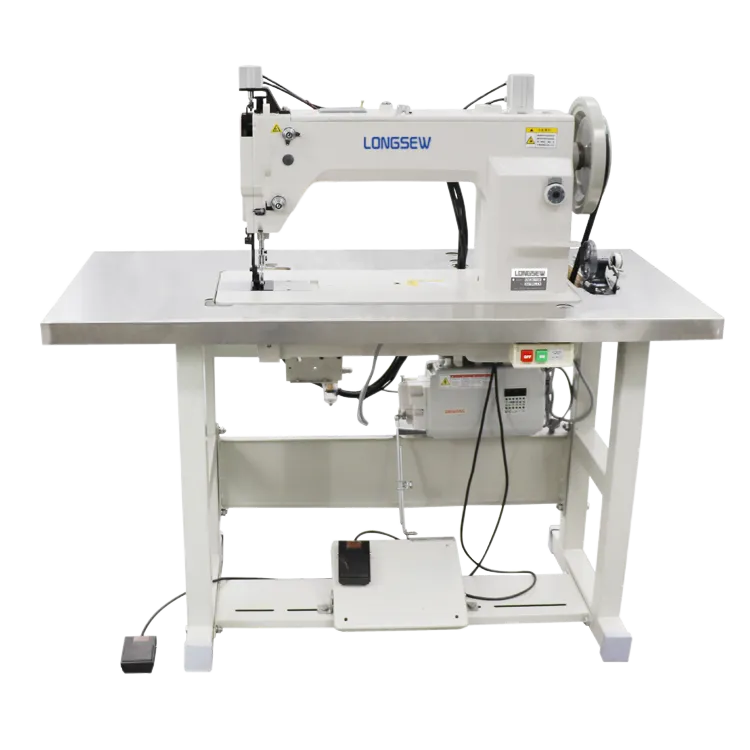jumbo bag lock stitch sewing
Jumbo Bag Lock Stitch Sewing An Overview
In the world of textiles and packaging, the importance of robust and reliable sewing techniques cannot be overstated. One such technique, particularly relevant in the realm of industrial packaging, is the lock stitch sewing method used for jumbo bags. Jumbo bags, also known as bulk bags or FIBC (Flexible Intermediate Bulk Containers), are widely utilized for transporting a variety of bulk materials ranging from agricultural products to construction supplies. This article delves into the significance of lock stitch sewing for jumbo bags, exploring its benefits, applications, and the technology behind it.
What is Lock Stitch Sewing?
Lock stitch sewing is a widely utilized technique in garment making and industrial sewing, characterized by its use of two threads — one from the needle and one from the bobbin — to create a secure, interlocking stitch. Unlike other sewing methods that may use a single or chain stitch, the lock stitch is known for its strength and durability, making it ideal for heavy-duty applications such as jumbo bags.
The process begins as the upper thread passes through the fabric, while the lower thread that resides on the bobbin comes up to create a knot. This interlocking of threads forms a sturdy seam that can withstand significant stress, making it perfect for bags designed to hold large quantities of material.
Benefits of Lock Stitch Sewing for Jumbo Bags
1. Strength and Durability One of the primary advantages of using the lock stitch method for jumbo bags is its inherent strength. The interlocked threads create a secure seam that can bear the weight of heavy materials, reducing the risk of tearing or ripping.
2. Tight Security Against Spillage When transporting or storing bulk materials, the risk of spillage is a significant concern. Lock stitch seams are highly resistant to fraying and unraveling, ensuring the contents remain securely sealed inside the bag.
3. Versatility Lock stitch sewing can be applied to various types of fabric, including woven polypropylene, which is commonly used for jumbo bags. This versatility allows manufacturers to produce bags suited for different materials and applications.
4. Efficiency in Production Modern sewing machines designed for lock stitch sewing can dramatically increase production efficiency. Automated systems can sew multiple bags in a fraction of the time it takes to hand-sew, helping manufacturers meet high demand.
5. Cost-Effectiveness Given their durability, bags sewn with lock stitches require less frequent replacement. This longevity translates to cost savings over time for businesses that rely on jumbo bags for their operations.
jumbo bag lock stitch sewing

Applications of Jumbo Bags
Jumbo bags have a wide array of applications across various industries
- Agriculture Farmers and suppliers often use jumbo bags for storing grains, fertilizers, and organic materials. The lock stitch ensures that these bags can withstand outdoor conditions without compromising the quality of the contents.
- Construction In the construction sector, jumbo bags are commonly used to transport sand, gravel, and cement. The heavy-duty materials combined with the lock stitch stitching create a container that can manage substantial weight.
- Chemical Industry Many chemicals, whether granular or powder, are stored in jumbo bags. The robust construction provided by lock stitch sewing helps prevent leaks that could lead to contamination or hazardous situations.
Technology Behind Lock Stitch Sewing
The machinery used for lock stitch sewing has evolved significantly. Advanced sewing machines now incorporate features such as programmable settings, automated thread cutting, and high-speed stitching capabilities, enhancing both productivity and precision. Manufacturers implementing these technologies benefit from reduced labor costs and improved product quality.
Additionally, advancements in thread materials have contributed to the effectiveness of lock stitch sewing. High-tenacity synthetic threads are more resistant to wear and tear, further enhancing the durability of the seams.
Conclusion
Lock stitch sewing is not merely a method; it is a cornerstone of the manufacturing process for jumbo bags that ensures safety, strength, and reliability across various industries. As businesses increasingly prioritize efficient and secure packaging solutions, the significance of techniques like lock stitch sewing will continue to rise. By investing in quality sewing practices and the right technology, manufacturers can meet the demands of a rapidly evolving market while providing exceptional products. Whether in agriculture, construction, or chemicals, the lock stitch sewn jumbo bags play a crucial role in keeping operations smooth and cost-effective.
-
Boost Production Efficiency with a Pattern Sewing MachineNewsAug.29,2025
-
Industrial Excellence with the Best Heavy Duty Sewing MachineNewsAug.29,2025
-
Precision and Power with the Best Pattern Sewing MachineNewsAug.29,2025
-
Reliable Bulk Packaging Starts With the Right FIBC Sewing MachineNewsAug.29,2025
-
Advanced Packaging Solutions: Elevate Productivity with Jumbo Bag Sewing Machine and Industrial Stitching EquipmentNewsAug.29,2025
-
High-Performance Solutions for Bulk Packaging: FIBC Sewing Machine and MoreNewsAug.29,2025
-
Maximize Efficiency with an Industrial Cylinder Arm Sewing MachineNewsAug.28,2025


























